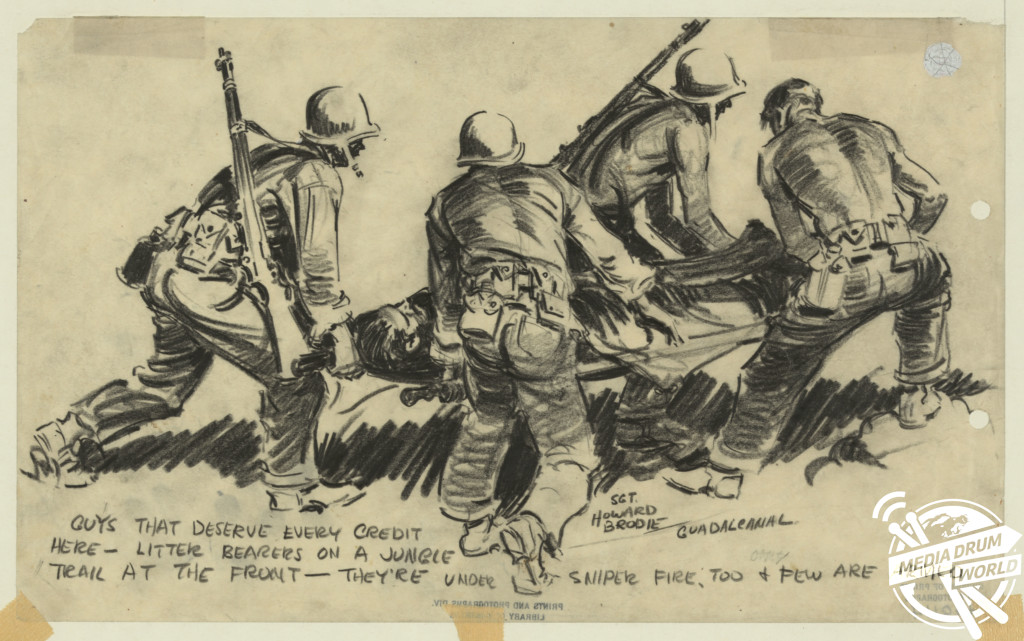
By Tom Dare
A SERIES OF CHILLING sketches done by an American artist on the front line of one of the most intense conflicts of the Second World War have resurfaced today, on the 75th anniversary of the battle’s most pivotal period.
The drawings, sketched by artist Howard Brodie during the Battle of Guadalcanal in the Pacific in 1942, show the war in all its horror. Scenes sketched by Brodie include a group of stretcher bearers transporting a wounded soldier across a battlefield while under sniper fire, while another shows a gunner at the helm of a B-17 machine gun.
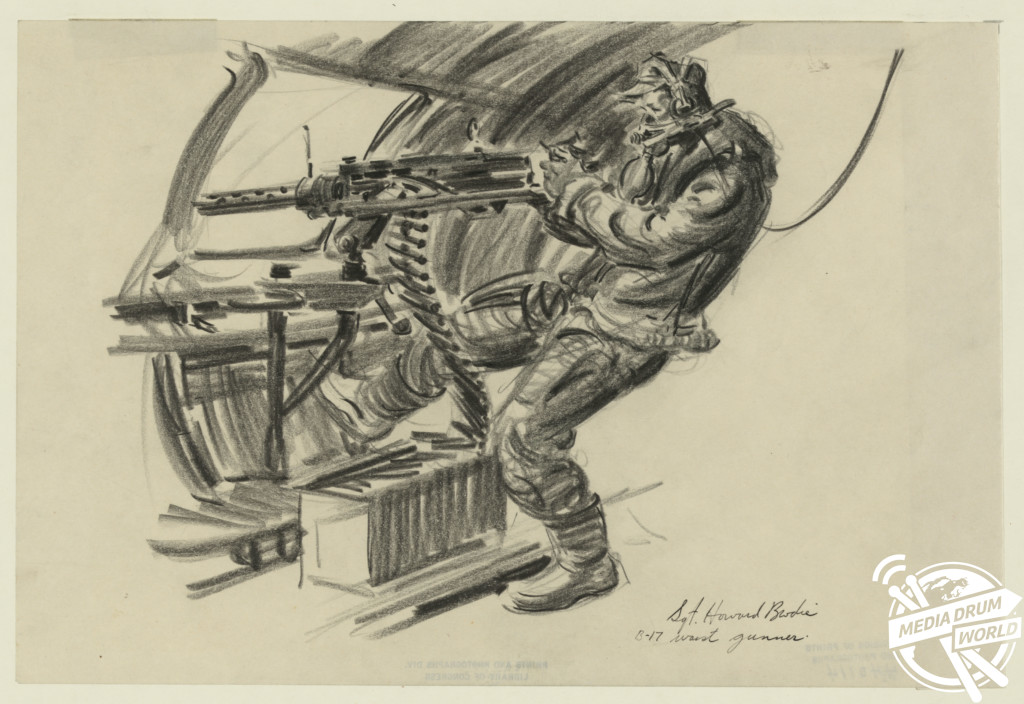
Further drawings show a group of soldiers rowing ashore, with others displaying the reality of warfare as soldiers sit in cramped conditions in a dugout.
The Battle of Guadalcanal was the first major offensive by the Allies against the Japanese empire, and took place on and around the island of Guadalcanal in the Pacific.
The allies landed on the island, as well as the islands of Tulagi and Florida in the Solomon Islands, on August 7, 1942 in an attempt to drive the Japanese from the area, and to help establish a base in the Pacific to prevent the axis powers threatening supply and communication routes between the US, Australia, and New Zealand.
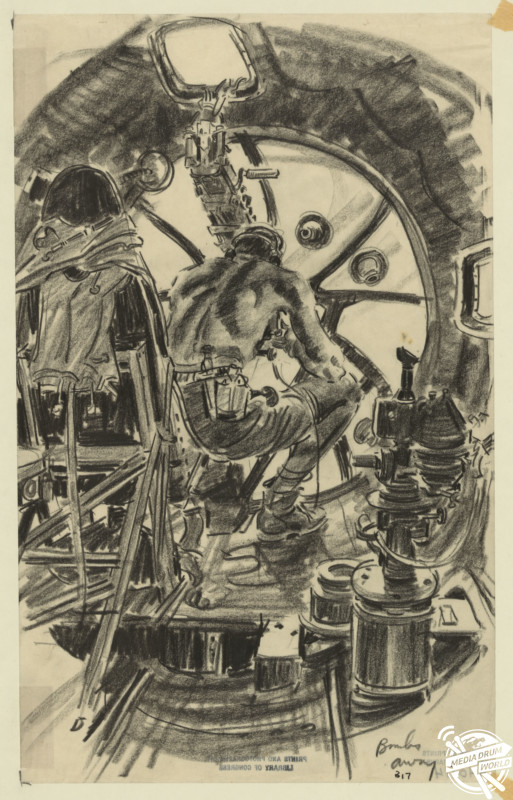
After driving the Japanese from the islands, the allies had to face a series of attempts by their adversaries to retake the area, with a particular emphasis by the Japanese on an airbase they had begun constructing prior to the allies’ arrival on Guadalcanal called Henderson Field.
This climaxed in the now infamous Naval Battle of Guadalcanal, which took place between November 12 and November 15 and became known as the pivotal moment in the battle for the islands. Japanese warships planned to bombard the airbase with artillery, forcing the allies to retreat before landing infantry on the island and retaking the air base. However, their plan did not succeed with American warships pinning down many of the Japanese ships and destroying several of the ones carrying soldiers.
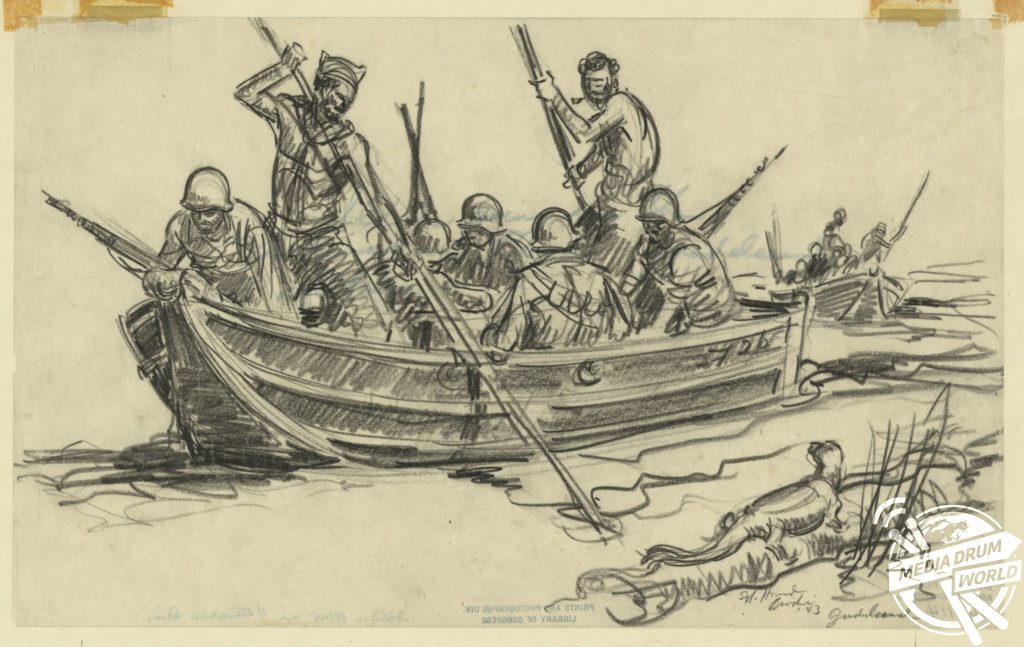
The naval battle marked the last major battle of the Guadalcanal campaign, with Japan’s last major push for the islands resulting in failure. During the campaign to take Guadalcanal, the Allied losses numbered around 7,100 men, 29 ships, and 615 aircraft. Japanese casualties were approximately 31,000 killed, 1,000 captured, 38 ships, and 683-880 aircraft. Famous author Robert Leckie said of the Guadalcanal campaign:
“There was no feeling of dedication because it was absolutely involuntary. I do not doubt that if the Marines had asked for volunteers for an impossible campaign such as Guadalcanal, almost everyone now fighting would have stepped forward. But that is sacrifice; that is voluntary.
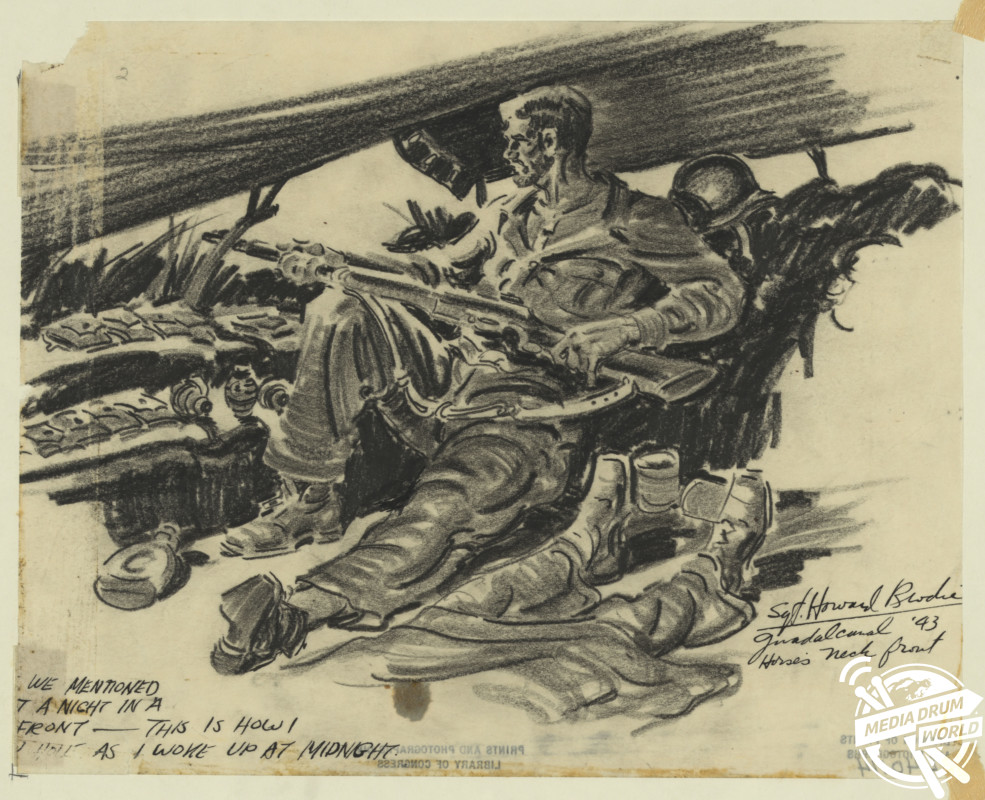
“Being expended robs you of the exultation, the self-abnegation, the absolute freedom of self-sacrifice. Being puts one in the role of victim rather than sacrificer, and there is always something begrudging in this. I doubt if Isaac would have accepted the knife of his father, Abraham, entirely without reproach; yet, for the same master, he would have gladly gone to his death a thousand times. The world is full of the sacrifice of heroes and martyrs, but there was only one Victim.”






